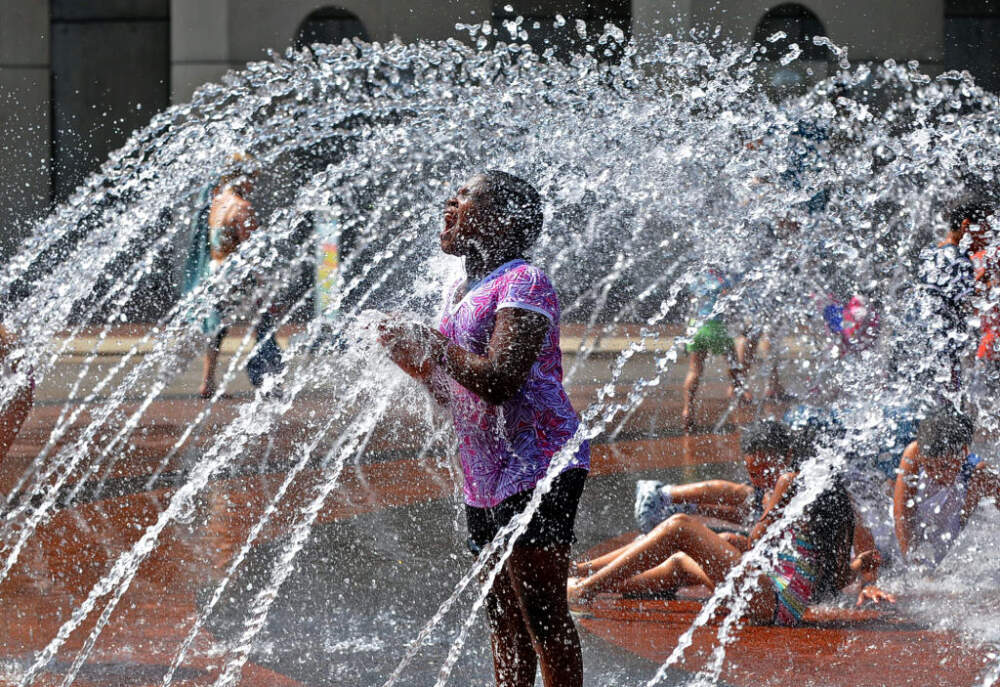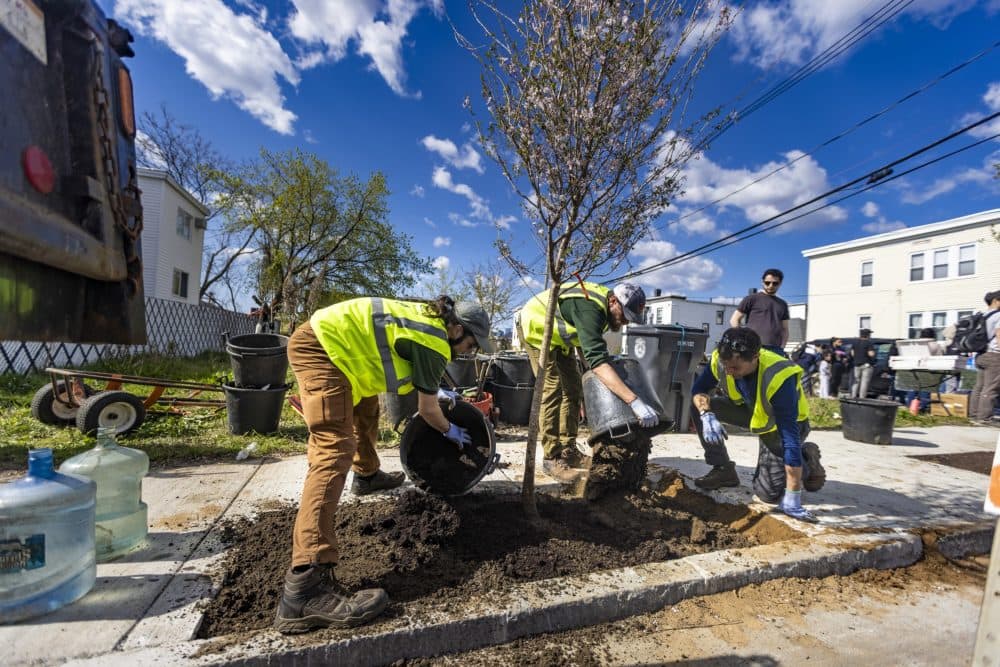Advertisement
Commentary
Boston's summer heat is an issue of racial equity. 'Greening' our city is one solution

Summer has officially arrived, and so has the heat.
The numbers are alarming: New England has already warmed 1.83 degrees Celsius, far more than the rest of the country. And a report by the city of Boston found that Boston could have more than 40 days of temperatures of 90 degrees or higher by 2030.
As a doctor and a public health researcher, we know the deadly threats the summer heat can pose to human health. During a heatwave, our bodies work to keep a steady core temperature, and not overheat — that’s a lot harder for newborns, pregnant people, the elderly and people with chronic illness. Severe heat can also increase the risks of cardiovascular-related death, kidney disease, mental health distress and suicide. It impacts our children’s cognitive abilities and is associated with risks for premature labor and low birth weight.
What we don’t talk about as much, however, are the myriad other ways heat can be dangerous. And how exposure to severe heat is, fundamentally, an issue of racial health equity. Because of longstanding practices like redlining and segregation, communities of color are disproportionately surrounded by more concrete and far less tree canopy, which creates a “heat island effect.” A hot day in Chelsea can be 10 to 15 degrees F higher than that same day in Brookline.
Heat also increases the risk of gun violence. In neighborhoods with entrenched cycles of gun violence, residents have long known that hot days bring more shootings. Scientific research has only just begun to catch up: a recent study of 100 U.S. cities found that almost 7% of shootings nationally — and 12.5% of shootings in Boston — could be attributed to above-average daily temperatures. This pattern likely emerges because heat increases aggressive behavior and because people spend more time outside on hot days, creating more opportunities for disputes with the potential to escalate into gun violence.
Climate change. Structural racism. Gun violence. These are three of the biggest societal challenges of our time — it’s daunting. What’s to be done? The only solution is to multi-solve -- that is, use our resources to address many issues at once and put health equity and justice at the center of our interventions.
One simple solution is to green our public spaces. Planting trees and investing in the health of forests, generally, is a well-known climate solution — trees clean our air, provide shade and pull heat-trapping carbon dioxide out of the atmosphere. Trees also offer numerous health benefits. One study showed that increasing tree canopies to 30% of urban spaces can decrease temperatures by 1.3 degrees Celsius, and decrease heat-related deaths by 33%.
In neighborhoods with entrenched cycles of gun violence, residents have long known that hot days bring more shootings.
Mayor Michelle Wu has created a new division of forestry and made increasing Boston’s tree canopy a significant part of the city’s environmental justice campaign. This should be a model for state and federal legislation.
Greening public spaces is also a proven, low-cost strategy for preventing gun violence. Researchers have found that converting unkempt vacant lots into small parks can reduce nearby gun violence by as much as 29%. Another study estimated that cities could reduce gun violence by making tree canopy more equitably distributed.
In Boston, decades of racial segregation and economic disinvestment in sections of Roxbury, Dorchester and Mattapan have left tree canopy lacking and made residents vulnerable to gun violence. Nonprofits like PowerCorpsBOS have the exact right idea. Their synergistic approach provides paid job training — an approach that can reduce violence — and builds the city’s urban forestry workforce.

Certainly we will need to do far more than plant trees and increase green space to fully address climate change and gun violence. We must urgently end the use of fossil fuels and close gaps in gun safety laws. But nature-based solutions have significant community-level health benefits and should play an important role in our public policy.
Our children deserve to be enjoying their summers without worrying about the impact of accelerating heat waves. It's past time for the adults to recognize the risks of severe heat and protect our communities from its dangers.
Dr. Gaurab Basu is a primary care physician, an instructor at Harvard Medical School and co-director of the Center for Health Equity Education & Advocacy at Cambridge Health Alliance.
Jonathan Jay, DrPH JD is an an assistant professor at the Boston University School of Public Health in the department of community health sciences.